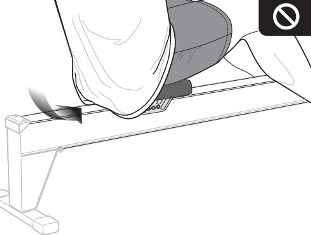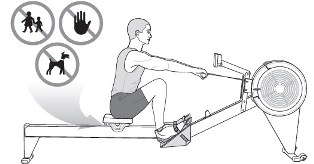Take a Seat
To finish our series of discussions on the connections of the athlete to the indoor rower, we’ll look in depth at the seat. Previously, we’ve discussed the handle and foot straps.
The use of a sliding seat is what sets apart competitive rowing from traditional rowing in a rowboat. On a fixed seat, the rower can only use arms and body to take short strokes. In a rowing shell, the addition of a sliding seat means that the power of the legs can be used, and longer strokes propel the boat. The seated position of rowing makes the sport low impact, and thus, more accessible for different sizes and abilities.
Exercising in a seated position, as explained in our post about butt pain and seat cushioning, puts the muscles of the gluteus maximus to work—while also being sat upon! We recommend reading this blog for an in-depth look at seat design and suggestions for comfort.
Let’s look at getting set up on the indoor rower seat.
It is important not to wear loose clothing such as long shirts or loose shorts that can get caught in the seat rollers. We recommend tucking in long shirts and wearing form-fitting clothing.

Also, please keep children, animals, and fingers away from the seat rollers. Seat rollers can cause injury.

The seat provides a stable platform for rowing, and you should sit comfortably centered on the seat. Sitting too far forward or too far back can lead to poor balance, as can sitting too far to one side or the other. Sit relaxed. For some people, a wider, more stable base is necessary, in which case our tractor seat can be helpful. However, this adapted rowing position limits the full motion of the rowing stroke and should only be used with that consideration in mind.
One common error is “jumping off the seat,” which may happen especially when an athlete starts to row faster and harder. The athlete can literally end up off the seat and sitting on the monorail in this situation. This interrupts the stroke and points to a few possible technique errors:
- “Shooting the slide” (as seen at minute 5:40) pushes the seat back quickly without the body following. When rowing harder, this momentum can push the seat back, leaving the athlete behind! The video gives a few suggestions for staying connected on the drive with the legs, back and arms.
- When pushing off the foot stretchers, it is important to keep all momentum horizontal. Any vertical movement can bring your weight off the seat and allow it to roll away. Check your foot position to make sure your feet are not too low, causing you to push upwards.
For a smooth ride, and to extend the life of your seat rollers, be sure to keep the monorail and rollers clean. All it takes is a quick wipe of the rail and rollers on a regular basis. Black residue on the monorail may indicate wearing of the seat rollers. This is normal: The seat rollers are a wearing part that may eventually need to be replaced. If you start to experience a bumpy feeling under your seat, it may be time. This is an inexpensive part that can be purchased online or by giving us a call.
If you have questions on the seat on the indoor rower, give us a call or email info@concept2.com.au. We’re always happy to help.
